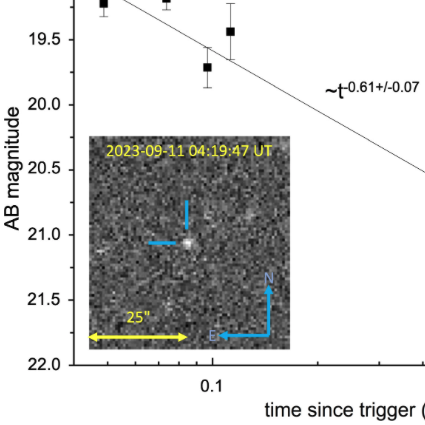First GRB optical counterpart with GOTO
 Gamma-ray bursts, particularly poorly-localised ones, are a secondary
science priority for our GOTO
network of telescopes, after binary neutron-star mergers. While we've
followed
up many such events, up until late last year we'd been unsuccessful in
actually discovering an optical counterpart.
Gamma-ray bursts, particularly poorly-localised ones, are a secondary
science priority for our GOTO
network of telescopes, after binary neutron-star mergers. While we've
followed
up many such events, up until late last year we'd been unsuccessful in
actually discovering an optical counterpart.
This all changed with GRB230911A, detected last September, and for which Monash PhD student Sergey Belkin identified the optical afterglow (reported first in GCN #34681). This discovery was significant in several respects; it included observations from both our northern and southern instruments (the latter was deployed only a few months earlier), and was an emphatic demonstration of the effectiveness of our automated screening, with just one candidate left over for human review. Sergey reported the discovery in a research note, which has now been published by IOP.
Hopefully the first of many more!
Labels: 2024, transients

